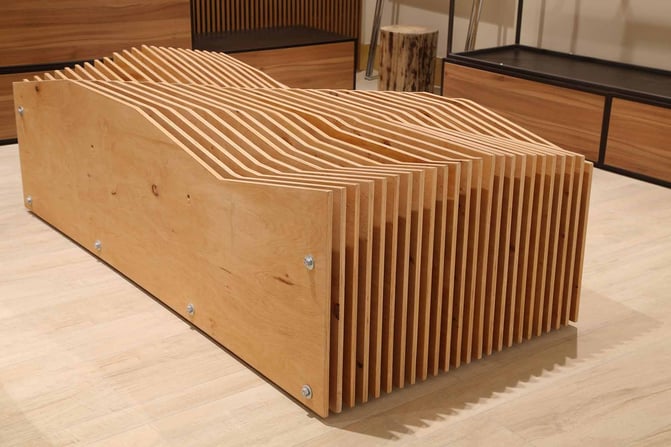
How to reduce manufacturing costs in wood-based panel
Katérina Liapis | January 25, 2022
Approximately 410 Million m3 (2018) of wood panels are produced today and the most common types are medium density fiberboard (MDF), high density fiberboard (HDF), particle board (PB), plywood (Ply), and oriented strain boards (OSB). Globally plywood is very widespread/prevailing/prevalent owing to its high demand for furniture manufacturing in Asia Pacific and North Americas. In Europe particle board is dominating followed by MDF and plywood. The two most dominating applications are construction and furniture.
Things you should know about wood-based panels
Multiple challenges ahead
Most of the wood-based panels are manufactured with formaldehyde-based resins such as urea formaldehyde, melamine urea formaldehyde or phenol formaldehyde.
One of the main challenges during the manufacturing of the panels is to obtain an optimum adhesive distribution on the wooden substrate to secure good bonding.
Besides there is a growing awareness towards mitigating formaldehyde emissions. This can be achieved by reducing the resin consumption allowing improved sustainability as well as cost reduction. However, this could compromise the final quality of the panels.
In this blog post, we will explain how Exilva could bring wood-based panels to the next level.

Impact from the resin system
The adhesive system is important when it comes to both the manufacturing of the boards, as well as the performance. Typically, it is a two-component system with resin and a hardener that is applied to the wood before pressing process of the board starts. The resin ratio can vary in the core and surface of the board, and typical levels are 7-12%.
Adhesive distribution as well as interactions between the adhesive and wooden substrate are crucial parameters regarding board performance. The ultimate objective is to have optimum adhesive distribution and wetting as well as minimal but sufficient penetration into the wood to guarantee the best mechanical properties/board performance.
Controlling the rheology of the resin system is therefore important to ensure uniform and good application of the glue and correct wetting and penetration into to substrate.
A natural solution available
Exilva is a rheology modifying additive derived from wood that works well in these resins, as shown in the case study for particle board (EXILVA H2020-709746 project). In addition to better spraying, it also has a positive impact on the internal bond of the board.
The internal bond (or tensile strength) is one of the most important properties of the board . It measures the maximum perpendicular separating force the board can withstand before it breaks.
In summary, the bar diagram shows an increase in the internal bond strength regardless of the manufacturing technology (blue and red bars) when using Exilva as a rheology additive, which makes it possible to produce stronger board or achieve cost savings by using less adhesive.
 Figure 1. Internal bond strength increases when using Exilva
Figure 1. Internal bond strength increases when using Exilva
Get set for regulatory impacts
A common challenge for formaldehyde-based resin technologies is the unwanted long-term release of toxic formaldehyde from the end products. Although the levels are generally low, increasingly stricter environmental regulations will require more environmentally friendly adhesives to produce greener panels. Using Exilva gives the benefit of using less adhesive which subsequently should reduce the formaldehyde release and carbon footprint of these products.
The increased efficiency of the adhesive enables development of stronger and lighter boards which will reduce the LCA burden caused by the logistics of the wood, and final board-products.
Summary
Regardless of the manufacturing technology, Exilva can improve the performance of the glue by increasing the internal bond of the board. The unique rheology properties of Exilva provides better covering of the wooden substrate contributing to the improved bond strength. Therefore, it gives the opportunity to reduce the amount of resin per cubic meter of board resulting in lower cost, potential lower formaldehyde emissions and improved sustainability for the boards.
If you found this blog post interesting and want to learn more about how you can improve your process or produce better performing panels, don't hesitate to contact us!
Written by:
Katérina Liapis
Katerina joined Borregaard in 2017 as a research scientist and focused on the Exilva product and its performance in adhesives. She is now working as a Technical Application Manager. Katerina has a master degree in polymer material science from the University of Strasbourg, France and experience from international companies.
